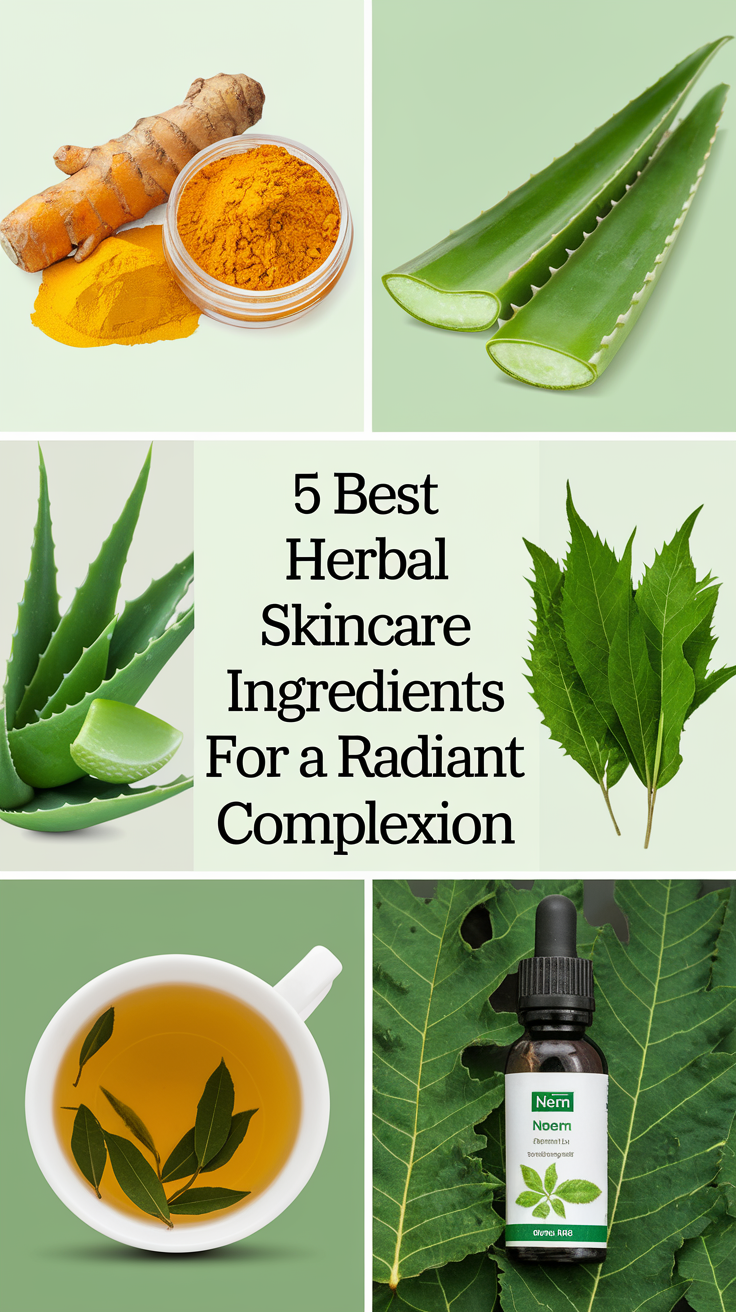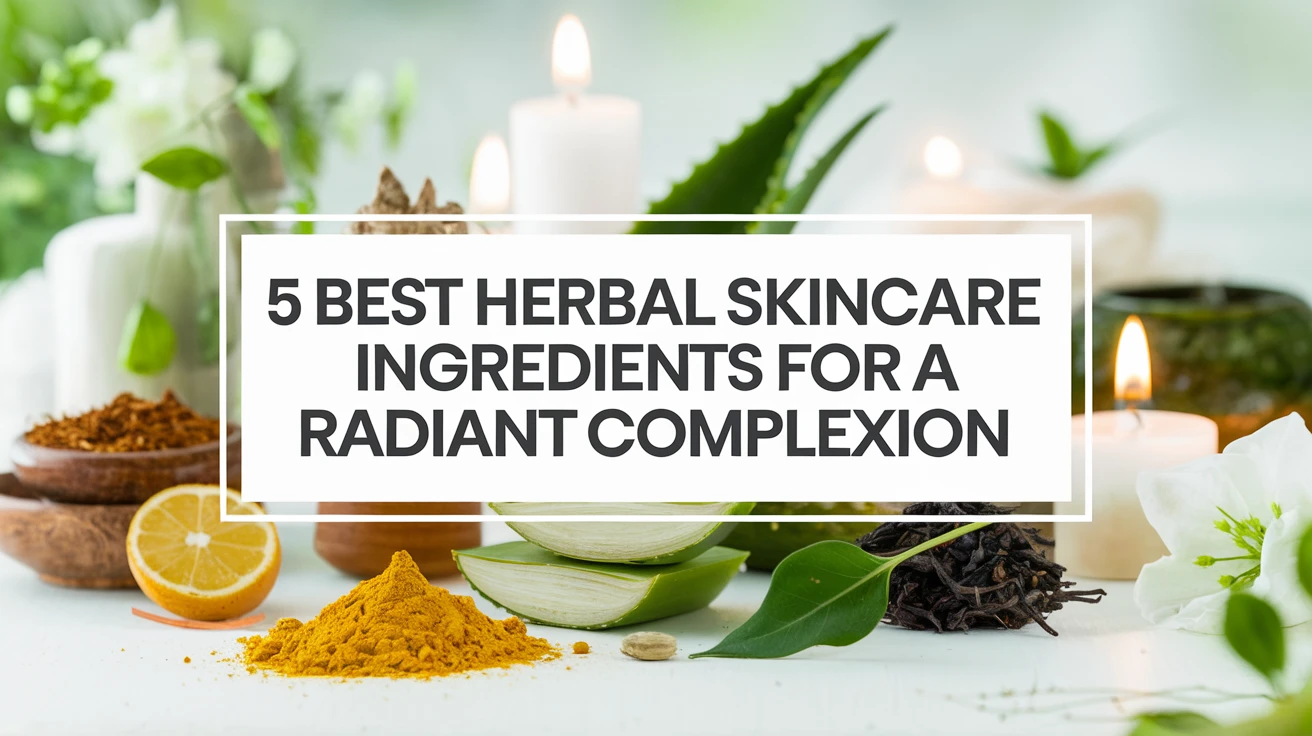
Introduction: Why Herbal Skincare Deserves a Place in Your Beauty Cabinet
Isn’t it fascinating how the solutions to our modern skincare woes have often been growing in nature for centuries? I’ve been on quite the journey with my skin over the years, and let me tell you—switching to a herbal skincare routine was nothing short of transformative. There’s something deeply satisfying about treating your largest organ with ingredients you can actually pronounce!
Long before fancy laboratories and synthetic compounds, our ancestors were crushing herbs, extracting plant oils, and creating poultices that healed, soothed, and beautified. These time-tested botanical ingredients don’t just work—they often work without the harsh side effects that can come with their lab-created counterparts. Ready to discover nature’s skincare superstars? Let’s explore the five herbal ingredients that could revolutionize your complexion just as they did mine.
1. Turmeric: The Golden Anti-Inflammatory Miracle
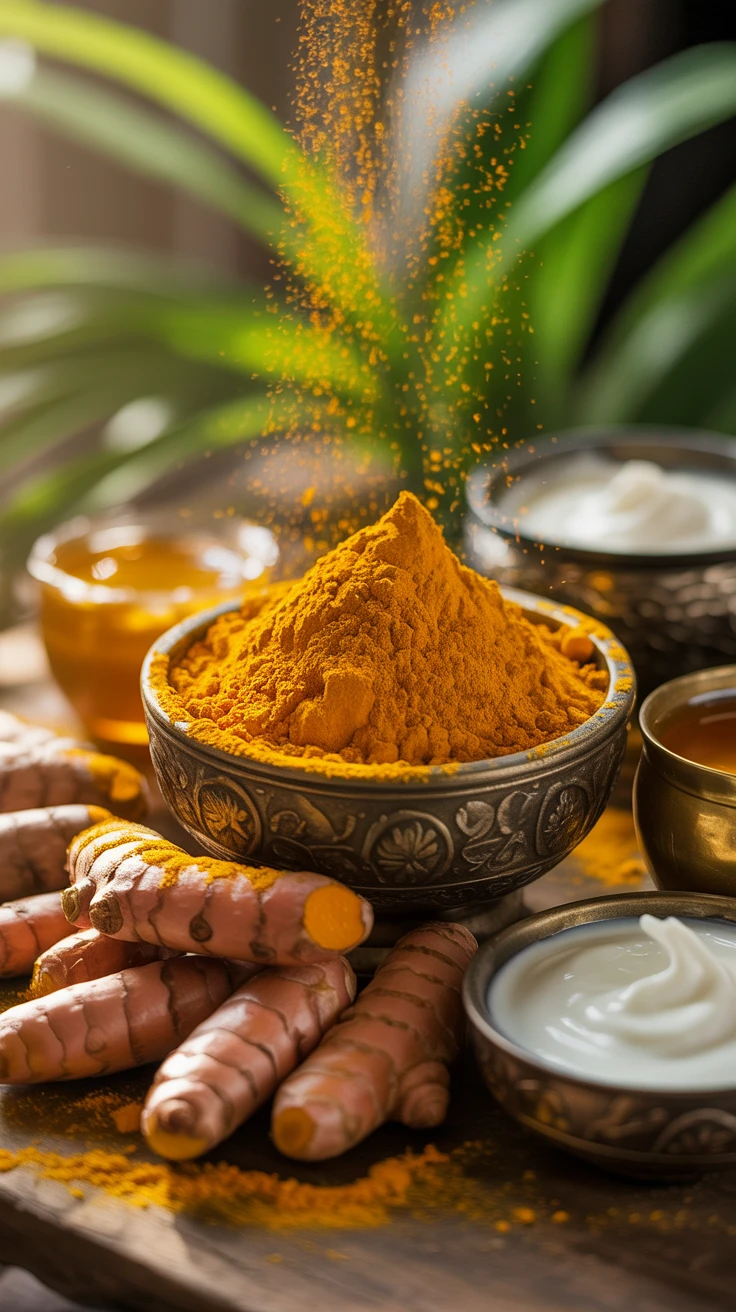
That vibrant yellow spice in your kitchen cabinet isn’t just for curries—it’s a skincare powerhouse that’s been used in Ayurvedic medicine for thousands of years. When I first heard about applying turmeric to my face, I was skeptical (and worried about looking like a Simpson character). But trust me, when used correctly, turmeric is worth its weight in gold for your herbal skincare routine.
Why Your Skin Will Love Turmeric
- Potent anti-inflammatory properties: Curcumin, the active compound in turmeric, calms irritated skin and reduces redness—perfect for acne-prone or sensitive complexions.
- Natural brightening agent: It inhibits melanin production, gradually fading dark spots and hyperpigmentation.
- Antioxidant protection: Turmeric fights free radicals that accelerate aging, helping maintain youthful skin.
- Acne-fighting abilities: Its antibacterial properties help combat breakouts while its anti-inflammatory action reduces their appearance.

View on AmazonAs an Amazon Associate, I earn from qualifying purchases.

View on AmazonAs an Amazon Associate, I earn from qualifying purchases.
Pro Tip: Always mix turmeric with a binding agent like yogurt or honey to prevent staining, and add a few drops of oil to help remove the mask more easily. A little goes a long way—usually ¼ teaspoon is enough for your entire face!
I’ll never forget trying my first turmeric mask—I mixed it with some Greek yogurt and a touch of honey. The cooling sensation was immediate, and by morning, a nasty breakout had noticeably calmed. While it did temporarily leave a slight yellow tinge (which washed away with my regular cleanser), the results were well worth it.
2. Aloe Vera: Nature’s Soothing Hydrator
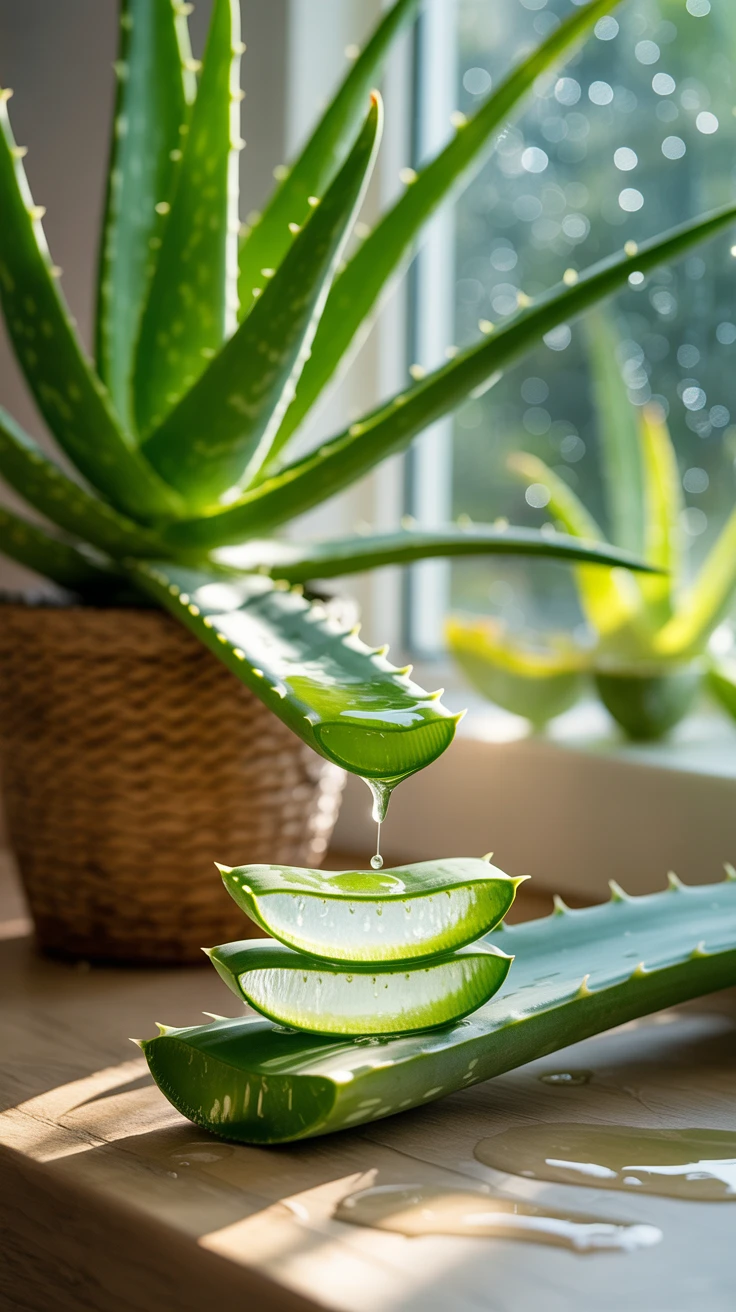
Is there anything aloe vera can’t do? This succulent plant has earned its reputation as the ultimate skin soother, and it’s been my personal SOS treatment for everything from sunburns to winter dryness. Incorporating aloe into your herbal skincare routine provides immediate relief for irritated skin while delivering long-term benefits.
Aloe Vera’s Skin-Loving Properties
- Deep hydration without oiliness: Aloe’s high water content and lightweight feel make it perfect for all skin types, even oily and combination.
- Accelerated healing: Contains compounds that promote cell regeneration, helping wounds heal faster and reducing scarring.
- Gentle exfoliation: Natural enzymes help remove dead skin cells, revealing fresher skin underneath.
- Vitamin-rich nourishment: Packed with vitamins A, C, E, and B12 that strengthen and protect skin.
During a particularly stressful month when my skin was acting up, I started applying fresh aloe gel directly from the plant every night. Within a week, the redness had subsided, and my skin felt remarkably balanced—not too dry, not too oily. It was like giving my face a tall glass of water!

View on AmazonAs an Amazon Associate, I earn from qualifying purchases.

View on AmazonAs an Amazon Associate, I earn from qualifying purchases.
Pro Tip: Keep an aloe plant on your windowsill for the freshest gel possible. Simply cut open a leaf, scoop out the gel, and apply directly to your skin. For an extra cooling effect, store some gel in a container in your refrigerator—heaven on hot summer days!
3. Tea Tree: The Blemish Banisher

Anyone who’s ever battled acne has probably heard of tea tree oil. This potent extract from Australia’s Melaleuca alternifolia tree has been my secret weapon against unexpected breakouts for years. While it’s powerful, tea tree deserves a thoughtful place in your herbal skincare routine for its unmatched clarifying properties.
Why Tea Tree Earns Its Spot in Your Routine
- Natural antiseptic: Kills acne-causing bacteria without the harshness of benzoyl peroxide.
- Reduces inflammation: Calms angry, red pimples overnight.
- Unclogs pores: Helps dissolve excess sebum that leads to blackheads and whiteheads.
- Tackles fungal issues: Effective against conditions like dandruff and athlete’s foot when used in haircare and body care.
Remember that time before your big presentation or date when a massive pimple appeared out of nowhere? Yeah, we’ve all been there. After discovering tea tree oil, those emergencies became much less stressful for me. A tiny dab overnight can dramatically reduce the size and redness of a blemish by morning.

View on AmazonAs an Amazon Associate, I earn from qualifying purchases.

View on AmazonAs an Amazon Associate, I earn from qualifying purchases.
Pro Tip: Tea tree oil is potent stuff! Always dilute it with a carrier oil like jojoba or rosehip (about 2-3 drops of tea tree per teaspoon of carrier oil) to avoid irritation. If you have sensitive skin, do a patch test first on your inner wrist.
4. Chamomile: The Gentle Skin Soother
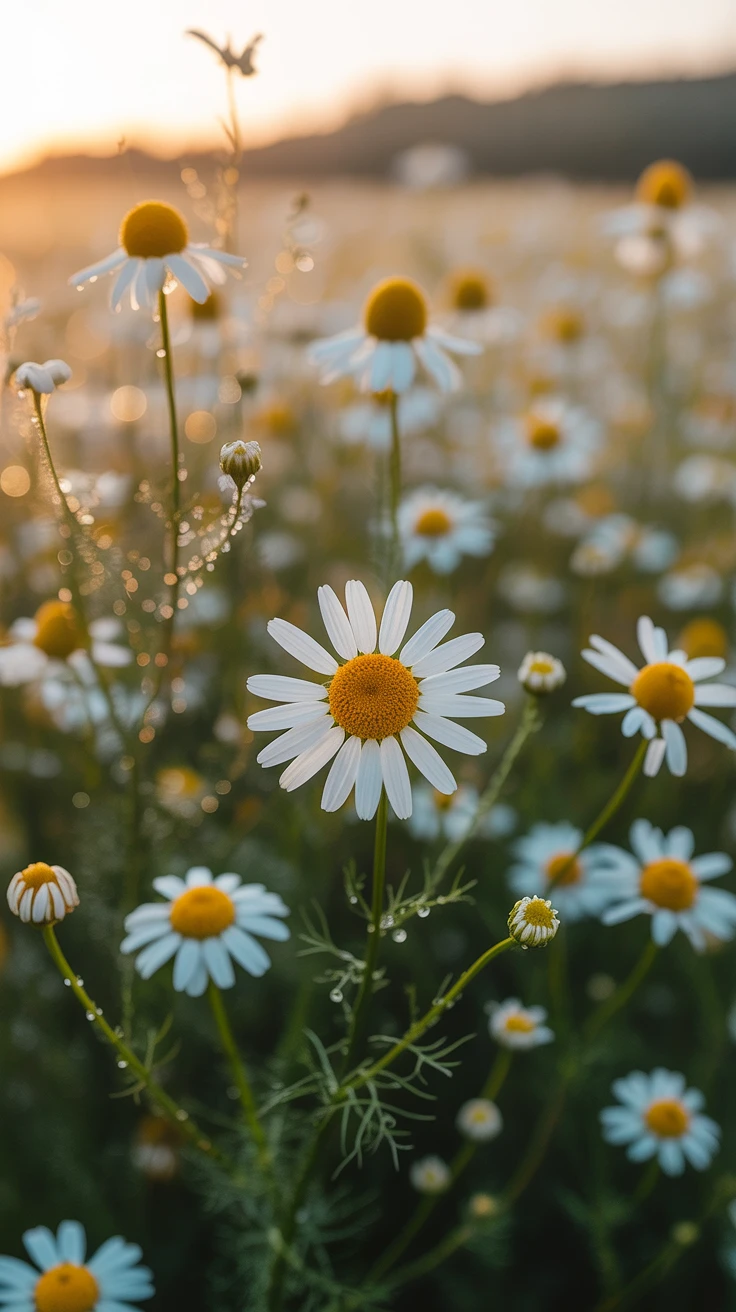
When we think of chamomile, many of us picture a calming bedtime tea—but this humble flower works similar magic when applied to your skin. For those with sensitivity or redness (raising my hand here!), chamomile can be the gentle hero your herbal skincare routine needs.
Chamomile’s Skin-Calming Superpowers
- Exceptional soothing properties: Contains bisabolol and chamazulene, compounds that calm irritation and reduce redness.
- Antioxidant protection: Shields skin from environmental damage and premature aging.
- Brightening effects: Gentle enough for sensitive skin yet effective at evening tone.
- Healing acceleration: Promotes tissue regeneration for faster recovery from skin issues.
During a particularly harsh winter, my cheeks became red, irritated, and flaky—nothing seemed to help until I tried a chamomile-infused facial oil. The relief was almost immediate, and within days, my skin barrier was noticeably stronger. Now I never travel without my chamomile extract, especially to places with extreme weather.

View on AmazonAs an Amazon Associate, I earn from qualifying purchases.

View on AmazonAs an Amazon Associate, I earn from qualifying purchases.
Pro Tip: For a quick DIY treatment, steep two chamomile tea bags in warm water, let cool completely, then use as a compress on irritated skin for 10 minutes. You can also refrigerate the tea and use cotton pads soaked in it to reduce under-eye puffiness—works like a charm!
5. Rosehip Oil: The Rejuvenating Elixir
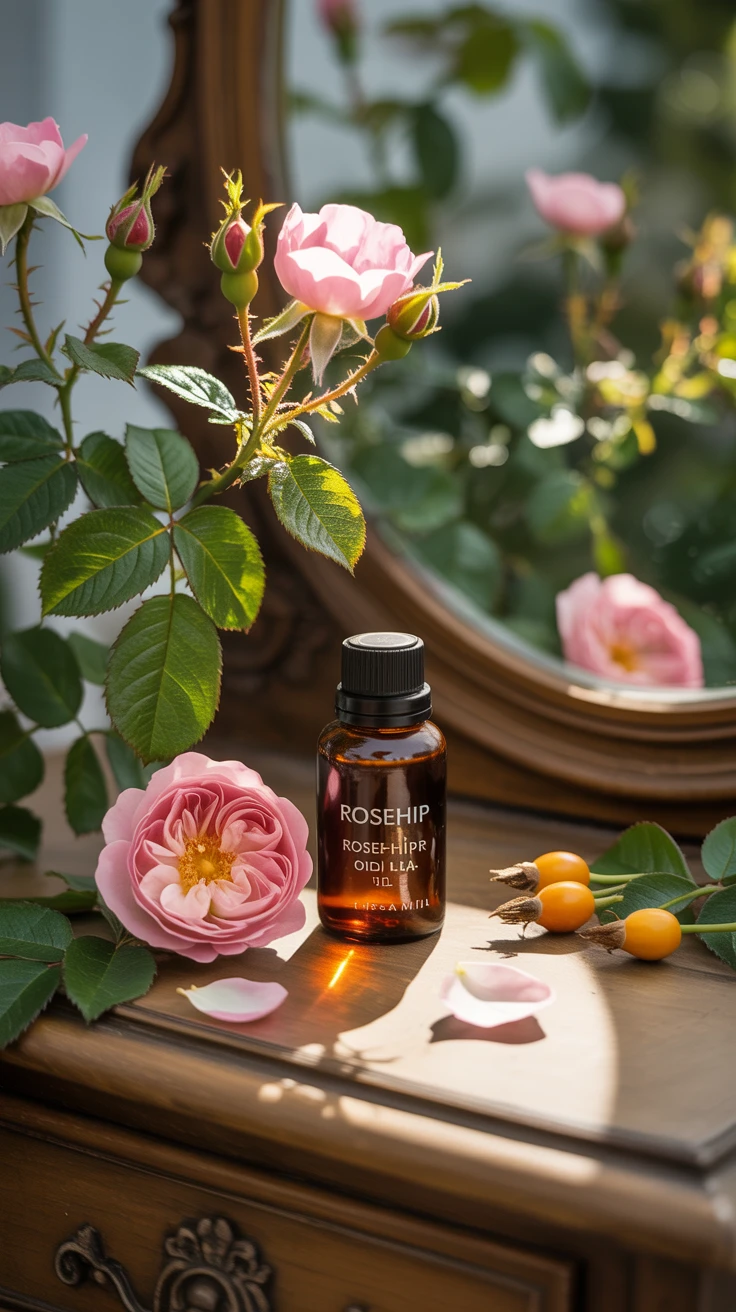
If you’re looking for the holy grail of natural anti-aging ingredients, let me introduce you to rosehip oil. Pressed from the fruit and seeds of wild rose bushes, this amber-colored oil has been my skin’s best friend since I hit my thirties. It’s the perfect finishing touch to any herbal skincare routine, especially if you’re concerned about fine lines or loss of radiance.
Why Rosehip Oil Is Liquid Gold for Your Skin
- Rich in essential fatty acids: Omega-3, 6, and 9 help rebuild and strengthen cell membranes.
- Vitamin A powerhouse: Natural retinol alternative that promotes cell turnover without irritation.
- Abundant vitamin C: Supports collagen production and brightens skin tone.
- Deeply nourishing yet non-comedogenic: Absorbs quickly without clogging pores, making it suitable for all skin types.
When I first started using rosehip oil, I was concerned it might make my combination skin break out. Instead, I woke up to the most balanced, glowing complexion I’d had in years. Those fine lines around my eyes? Noticeably softer. That patch of hyperpigmentation from sun damage? Gradually fading. It was like my skin had found its happy place.

View on AmazonAs an Amazon Associate, I earn from qualifying purchases.

View on AmazonAs an Amazon Associate, I earn from qualifying purchases.
Pro Tip: Store your rosehip oil in the refrigerator to extend its shelf life and give yourself a refreshing application experience. Apply 2-3 drops to slightly damp skin for optimal absorption, and always use it as the final step in your nighttime routine to lock in all the goodness from your other products.
Creating Your Customized Herbal Skincare Routine
Now that you’re acquainted with these botanical superstars, you might be wondering how to incorporate them all without overwhelming your skin. The beauty of a herbal skincare routine is its flexibility—you can mix and match based on your skin’s needs, which often change with seasons, stress levels, and age.
Sample Morning Routine
- Cleanse: Gentle wash with a chamomile-infused cleanser
- Tone: Aloe vera gel as a natural hydrating toner
- Treat: Spot-treat any blemishes with diluted tea tree oil
- Moisturize: Light moisturizer with turmeric extract
- Protect: Natural mineral sunscreen (non-negotiable!)
Sample Evening Routine
- Cleanse: Double cleanse to remove sunscreen and daily grime
- Mask: Turmeric and yogurt mask (1-2 times weekly)
- Tone: Chamomile tea as a soothing toner
- Treat: Aloe vera gel for hydration
- Seal: 2-3 drops of rosehip oil to nourish and repair overnight
Key Takeaways
- Turmeric offers powerful anti-inflammatory and brightening benefits—just remember to use it in small amounts with a binding agent to prevent staining.
- Aloe vera provides exceptional hydration and healing properties for all skin types, making it perfect for daily use.
- Tea tree oil is your targeted treatment for blemishes and breakouts, but always dilute it to prevent irritation.
- Chamomile soothes irritated, sensitive skin and reduces redness—ideal for reactive skin types or during seasonal transitions.
- Rosehip oil delivers natural retinol-like benefits and deep nourishment without clogging pores, making it suitable for all ages and skin concerns.
Conclusion
Embracing a herbal skincare routine isn’t just about following a trend—it’s about reconnecting with time-tested ingredients that work harmoniously with your skin’s natural processes. What I love most about these five botanical heroes is their versatility and gentleness. Unlike many synthetic ingredients that target one issue but potentially create others, these herbs offer multiple benefits with minimal downsides.
Remember, consistency is key with any skincare approach. Give your skin time to adjust to these new herbal allies, and pay attention to how it responds. You might find that your complexion needs different support as seasons change or as you age. That’s the beauty of nature’s pharmacy—there’s always another plant ally waiting to help. Here’s to your journey toward that radiant, healthy glow that comes from nurturing your skin with the best that nature has to offer!
Frequently Asked Questions
How long does it take to see results from a herbal skincare routine?
Most people notice immediate effects like improved hydration and reduced irritation within days. For more significant changes like fading hyperpigmentation or reducing fine lines, give your herbs 4-6 weeks to work their magic—this aligns with your skin’s natural renewal cycle. Consistency is key!
Can I use these herbal ingredients if I have sensitive skin?
Absolutely, but with some precautions. Start with chamomile and aloe vera, which are generally well-tolerated by sensitive skin. For turmeric, tea tree, and rosehip oil, always perform a patch test first. Dilute tea tree oil properly, use turmeric in small amounts, and introduce rosehip oil gradually. If you have diagnosed skin conditions like rosacea or eczema, consult with a dermatologist before trying new ingredients.
Are there any herbal ingredients I should avoid combining?
While most herbs play nicely together, be cautious about using multiple potent ingredients at once. For example, combining tea tree oil with turmeric might be too stimulating for some skin types. Similarly, using acidic herbs alongside tea tree oil could enhance irritation. A good rule of thumb is to focus on one active herbal ingredient for treatment and use gentler herbs like aloe and chamomile as your base.
How do I know if an herbal product is high quality?
Look for products that list the botanical name of the herb (e.g., Melaleuca alternifolia for tea tree), specify the concentration or extract type, and ideally are organic or wildcrafted. For oils like rosehip, cold-pressed and unrefined versions contain more beneficial compounds. Avoid products with long lists of preservatives or synthetic fragrances, which can counteract the benefits of the herbs.
Can I use herbal skincare during pregnancy?
Many herbs are safe during pregnancy, but some require caution. Chamomile and aloe vera are generally considered safe when applied topically. However, concentrated essential oils like tea tree should be used sparingly and with professional guidance. Some experts also recommend avoiding rosehip oil due to its vitamin A content, though the topical amounts are typically minimal. Always consult with your healthcare provider about your specific skincare routine during pregnancy.
